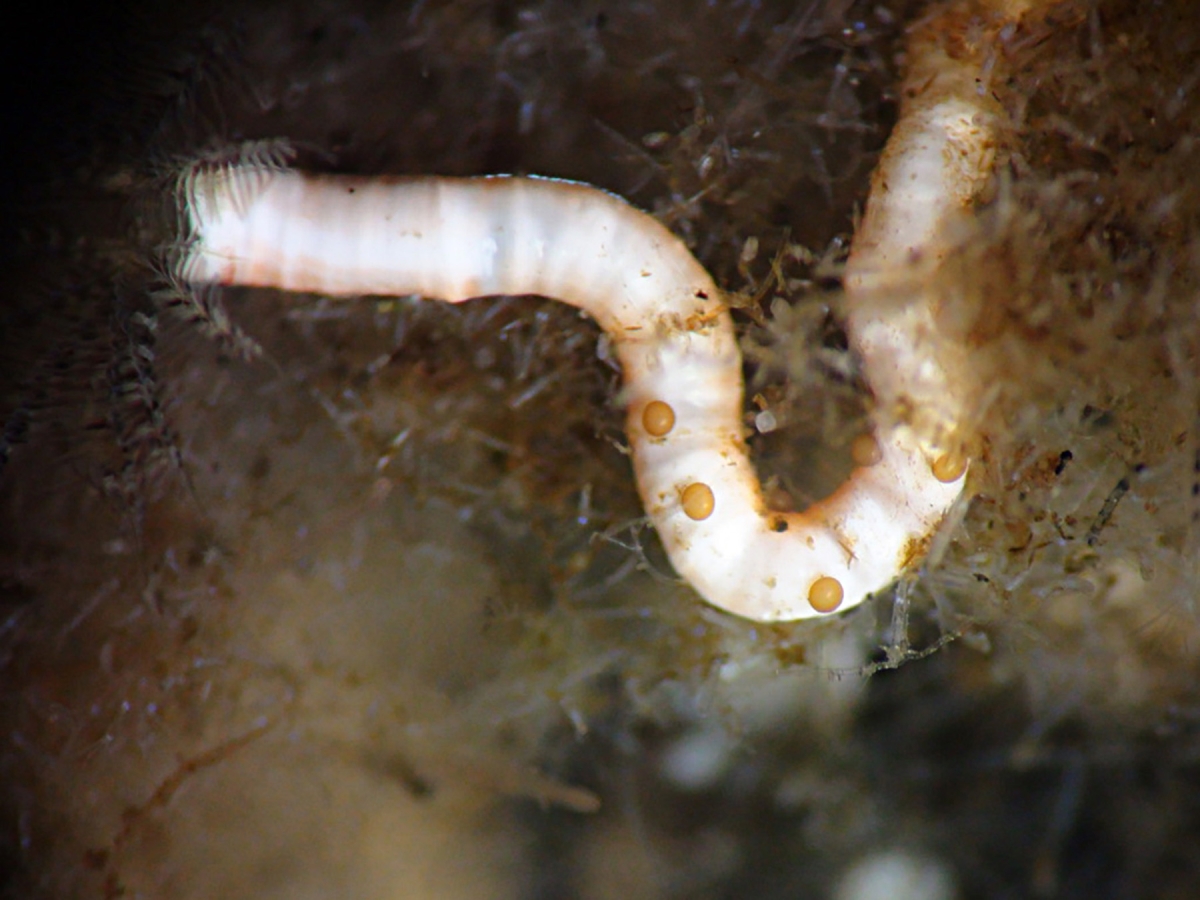Biofilms and Biodiversity Glossary

Glossary
Abiotic: The physical and chemical non-living factors in an environment.
Annelids: A phylum that includes segmented terrestrial and aquatic worms.
Bacteria: Single-celled prokaryotic organisms that form the first layer of a biofilm.
Biodiversity: The number of different species of organisms in a particular environment.
Biofilm: A coating or covering on the surface of a living or nonliving substrate composed of organisms like bacteria, protozoa, algae, and invertebrate animals.
Biotic: The living factors in an environment.
Bryozoan: An animal phylum that includes various bryozoan animals, or "moss" animals that are typically colonial in organization.
Crustaceans: A class of arthropod with 10 legs, antennae, and a hard exoskeleton.
Cnidaria: An animal phylum that includes hydra, sea anemones, jellyfish, and hydrozoan colonies.
Entoprocta: An animal phylum that includes organisms with tentacles on a cup-shaped body supported by a single stalk.
Evenness (E): A measure of how similar the abundances of different species are in the community.
Larvae: Immature forms of organisms, that typically look different from the fully grown adult and are usually smaller than the adult or even microscopic.
Mollusks: An animal phylum that includes bivalves (mussels), snails, slugs, and nudibranches.
Nematoda: An animal phylum that includes all roundworms.
Phytoplankton: Drifting microscopic plants that trap the energy from the sunlight and are primary organisms in a marine food chain.
Platyhelminthes: A phylum of animal that includes all flatworms.
Polychaete worm: A marine group of annelids that are the most numerous in the phyla Polychaetes. They can be free-living or sessile, depending on their life history.
Protozoa: A Kingdom that includes only single celled organisms like amoeba, stentor, vorticella, colonial ciliates, etc.
Rotifers: A phylum that includes organisms that have ciliated mouths and a retractable "foot" for anchoring.
Shannon-Weiner Index (H): This diversity measure came from information theory and measures the order (or disorder) observed within a particular system. In ecological studies, this order is characterized by the number of individuals observed for each species in the sample plot (e.g., biofilm on a plexiglass disc).
Simpson's Index (D): The probability that two randomly selected individuals in the community belong to the same category (e.g., species).
Simpson's Index of Diversity (1-D): The probability that two randomly selected individuals in a community belong to different categories (e.g., species).
Simpson's Reciprocal Index (1/D): The number of equally common categories (e.g., species) that will produce the observed Simpson's index.
Species: Organisms that are genetically related, similar physically, and can reproduce viable offspring.
Species Richness: The number of different species found in a particular environment.
Sessile: Organisms that remain attached to a substrate.
Zooplankton: Microscopic aquatic organisms, including larvae, which are the first consumers in a marine food chain.
